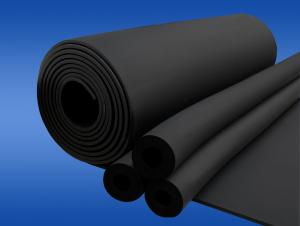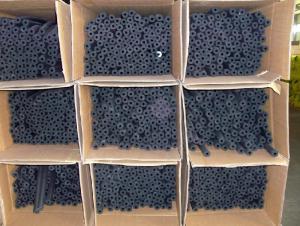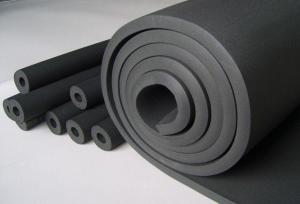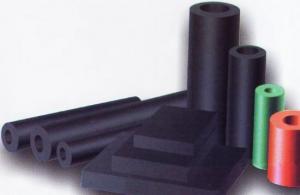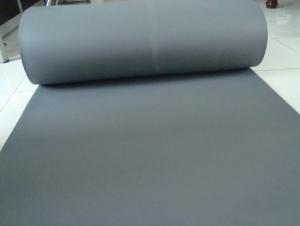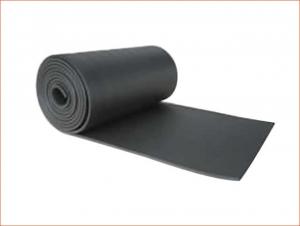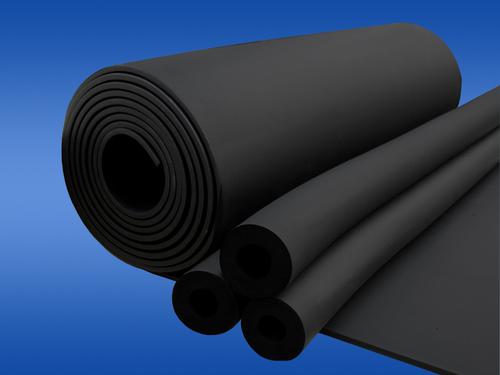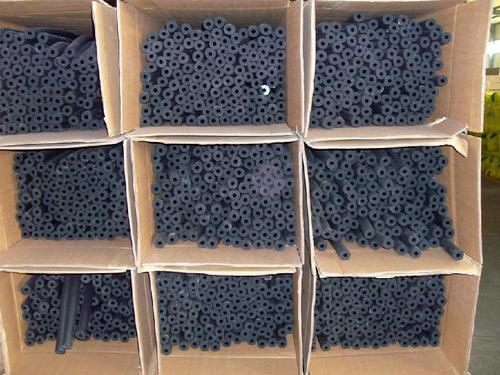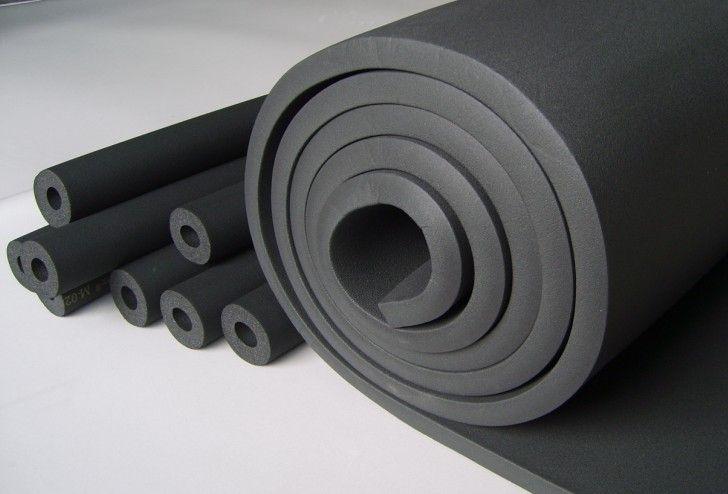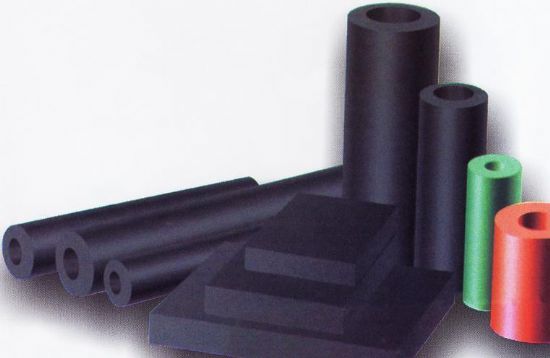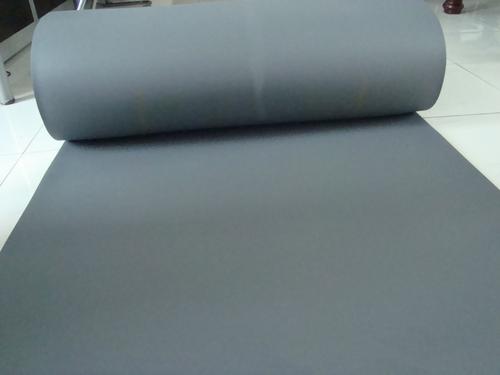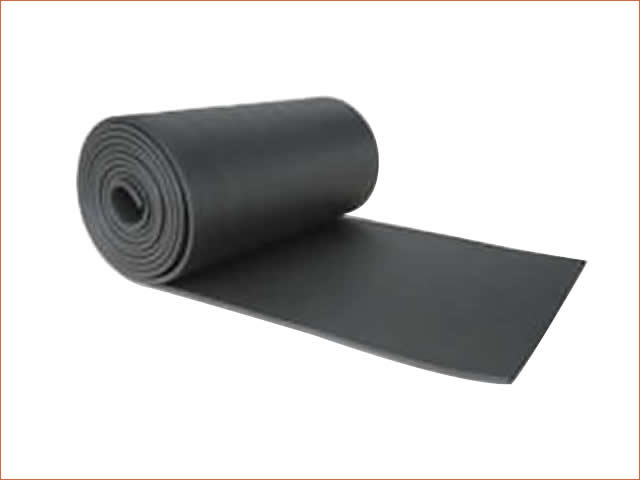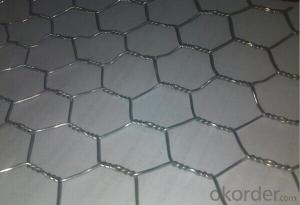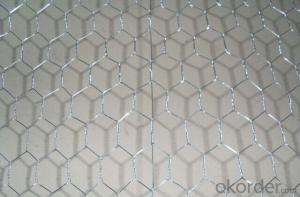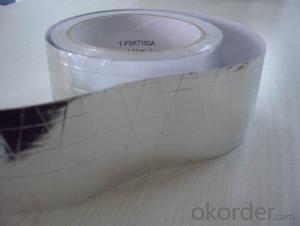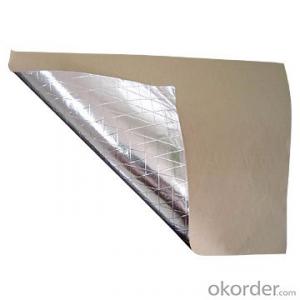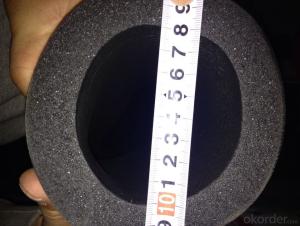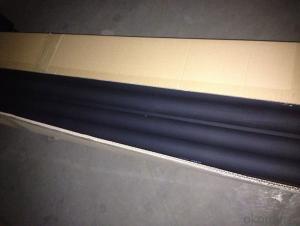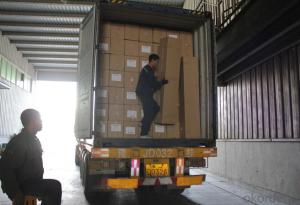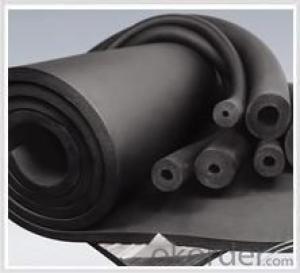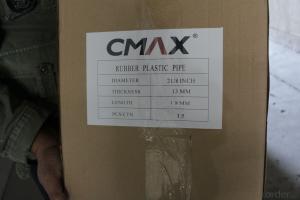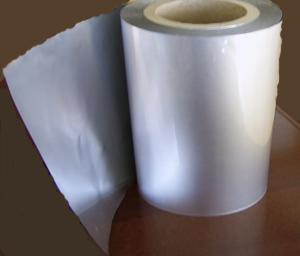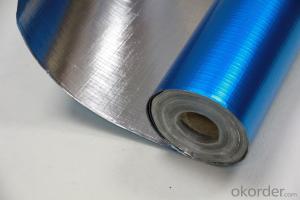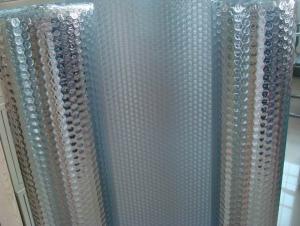High Quality Rubber Plastic with Aluminum Foil Facing
- Loading Port:
- China Main Port
- Payment Terms:
- TT OR LC
- Min Order Qty:
- -
- Supply Capability:
- -
OKorder Service Pledge
OKorder Financial Service
You Might Also Like
Flexible Rubber Plastic Insulation Material
High Quality Rubber Plastic
rubber plastic is a high quality heat-insulating and heat-preservation material which use butyronitrile rubber and polyvinychloride(NBR,PVC) as main raw materials.
The productionprocess includes mixing, tensing and continuous extruding , heating andfoaming, cooling and cutting.
FEATURES
Lower heat-conductivity
Higher fire-blockingperformance
Damp-proof andWater-proof
Softness
Neat and
Easy to installeasy handing and storage
Good flexibilityand tenacity
RUBBER PLASTIC SHEET
Standard Size
Density(kg/m3) | 40-90 | ||||
Thickness(mm) | 10 mm | 15 mm | 20 mm | 25 mm | 30 mm |
Length (m) | 20 | 20 | 10 | 10 | 10 |
Width (m) | 1.5 | 1.5 | 1.5 | 1.5 | 1.5 |
Remark: Othersized are available upon request. Other colors are available at customers request.
Application
rubber plastic arewidely used in sound isolation of wall planking, sound absorption in air ducts,and sound absorbing decorations in entertainment spaces. It can also be usedfor shock resistance and pressure relief in instruments and equipment.
TechnicalParameters
Item | Specification | Standard |
Density(kg/m3) | 40-90 | GB/T 6343 |
Temperature(℃) | -40~110 | GB/T 17794 |
Flammability | Class B | GB/T 8624-2006 |
Class 0 | BS 476Part7∝Part6 | |
Oxygen index (%) | ≥40 | GB/T 2406 |
SDR | ≤65 | GB/T8627-1999 |
Conductivity factor Average temperature | ≤0.031 | GB/T 10294 |
Water vapor permeability (%) | ≥1.0x104 | GB/T 17146-1997 |
≤1.96x 10-11 | ||
Water absorption ratio in vacuum (%) | ≤10 | GB/T 17794-2008 |
Dimension stability(N/cm) | ≤10 | GB/T 8811 |
Crack resistance | ≥2.5 | GB/T 10808 |
Compression resilience ratio (%) | ≥70 | GB/T 6669 |
Anti-ozone | No cracking | GB/T 7762 |
Ageing-resistance | Slightly crumpling, no cracks no pin holes, not deforming | GB/T 16259 |
Packaging,
Product is packedin cartoon.
RUBBER PLASTIC PIPE
Productintroduction
rubber plastic ismainly applicable to heat insulation of central air-conditioner system,refrigerator room and pipes of all kinds of refrigeration equipment and heatingequipment.
Standard Size
Copper tube OD inch | Seamless tube OD mm | Galvanized tube DN | ID mm | 9mm Nominal thickness | 15mm Nominal thickness | 20mm Nominal thickness | 25mm Nominal thickness | 30mm Nominal thickness | |||||
mm×mm | piece | mm×mm | piece | mm×mm | piece | mm×mm | piece | mm×mm | piece | ||||
1/4 |
|
| 6 | 6×9 | 180 |
|
|
|
|
|
|
|
|
3/8 |
| 6 | 10 | 10×9 | 140 | 10×15 | 80 | 10×20 | 70 |
|
|
|
|
1/2 |
|
| 13 | 13×9 | 120 | 13×15 | 80 | 13×20 | 50 | <p style="background-color:white;background-position:initial initial;background-repeat:initial initial;text-align:lef | |||
- Q: Is it safe and practical to reuse plastic food wrap materials after cleaning them?
- <p>Reusing food wrap materials after washing them is generally not recommended. Plastic wraps can lose their effectiveness as barriers against bacteria and air after one use. Washing them can also introduce bacteria and may not fully remove any residual food particles. For food safety and hygiene, it's better to use new, clean wraps each time.</p>
- Q: Is it hazardous to cook acidic or salty foods with aluminum foil?
- <p>Using aluminum foil with highly acidic or salty foods is generally safe, but it's important to use the correct type of foil. Heavy-duty aluminum foil is designed for cooking and is safe for use with acidic and salty foods. However, avoid using aluminum foil with reactive metals, as it can cause a chemical reaction. Always follow cooking instructions and be cautious with prolonged cooking times or high temperatures, as these can potentially cause the foil to break down and release small amounts of aluminum into the food. For best results, opt for non-reactive cookware or use parchment paper or silicone baking mats as alternatives.</p>
- Q: This question asks for guidance on preparing a nutritious meal using aluminum foil as a cooking method.
- <p>To make a healthy meal using aluminum foil, consider 'foil packet cooking'. Choose lean protein like chicken or fish, and pair it with a variety of colorful vegetables such as bell peppers, zucchini, and cherry tomatoes. Season with herbs, garlic, and a drizzle of olive oil. Fold the foil to create a sealed packet and bake in the oven at 400掳F (200掳C) for about 20-25 minutes or until the protein is cooked through and the vegetables are tender. This method retains nutrients and flavors while minimizing added fats.</p>
- Q: Is there a risk associated with using aluminum foil with raw meat or fish?
- <p>Yes, it is generally safe to use aluminum foil when handling raw meat or fish, as long as it is food-grade aluminum foil. Aluminum foil is designed to be non-toxic and resistant to corrosion, making it suitable for cooking and food preparation. However, it's important to ensure that the foil does not tear or puncture, as this could allow bacteria to contaminate the food. Additionally, avoid using aluminum foil in direct contact with acidic foods, as this can cause the foil to corrode and potentially release aluminum into the food. Always follow proper food safety guidelines when preparing and cooking with raw meats and fish.</p>
- Q: Describe the most effective methods for utilizing aluminum foil in cooking.
- <p>Aluminum foil facing can be used effectively in cooking in several ways: 1) As a barrier to prevent food from sticking to the pan or grill, reducing the need for oil or butter. 2) To wrap foods for steaming, which helps retain moisture and flavor. 3) As a cover to keep food warm after cooking or to prevent overcooking. 4) To create packets for cooking fish, vegetables, or other foods en papillote, which steams the food in its own juices. 5) For baking, it can be used to line pans to prevent sticking and to make cleanup easier. 6) Foil can also be shaped into a tent to cover food during the last few minutes of cooking to prevent it from drying out. Always ensure the shiny side of the foil faces inwards when in contact with food to avoid any potential chemical reactions with the food.</p>
- Q: Is there a concern that aluminum from aluminum foil can seep into food during cooking or storage?
- <p>There is minimal risk of aluminum leaching from aluminum foil into food. Aluminum foil is generally safe for cooking and food storage when used properly. The risk increases with acidic or alkaline foods and high temperatures, but under normal cooking conditions, the amount of aluminum that could leach is negligible. However, it's best to avoid wrapping food in aluminum foil for long periods or at very high temperatures to minimize any potential exposure.</p>
- Q: How should aluminum foil be properly stored when not in use to maintain its quality and usability?
- <p>The best ways to store aluminum foil when not in use include keeping it in a cool, dry place away from direct sunlight to prevent degradation. It's advisable to store it in its original box or a resealable plastic container to protect it from moisture and air exposure. Some people also use a paper towel roll as a dispenser by placing the aluminum foil around it, ensuring the shiny side is out for easy access. Keeping it in a drawer is also common, but it's important to prevent it from crumpling or tearing.</p>
- Q: Is it safe to use aluminum foil facing inside a microwave oven?
- <p>No, it is not safe to use aluminum foil facing in the microwave oven. Aluminum foil can cause sparks and potentially start a fire due to the reflective nature of the metal. It can also damage the oven's interior. Always use microwave-safe materials and avoid metal when cooking in a microwave.</p>
- Q: What is the most suitable material for food packaging that ensures safety and is also eco-friendly?
- <p>The best material for food packaging that is both safe and environmentally friendly is biodegradable or compostable material. Materials such as PLA (Polylactic Acid), made from renewable resources like corn starch, and paper-based packaging are preferred. They are non-toxic, compostable, and reduce plastic waste. Additionally, materials like glass and metal can be recycled and are also considered safe for food contact. However, it's crucial to consider the entire lifecycle of the packaging to ensure it's truly sustainable.</p>
- Q: Is it possible to use aluminum foil as a baking surface? If yes, what kinds of foods are suitable for baking with aluminum foil?
- <p>Yes, aluminum foil can be used for baking. It's particularly useful for foods that require even heat distribution or need to be shielded from direct heat, such as delicate pastries, fish, or vegetables. It can also be used to prevent food from sticking to the baking sheet or to catch any drips, making cleanup easier. However, it's important to note that some foods, especially those with a high sugar content, can burn if they come into direct contact with the foil, so it's best to use it with a light layer of oil or parchment paper underneath.</p>
Send your message to us
High Quality Rubber Plastic with Aluminum Foil Facing
- Loading Port:
- China Main Port
- Payment Terms:
- TT OR LC
- Min Order Qty:
- -
- Supply Capability:
- -
OKorder Service Pledge
OKorder Financial Service
Similar products
Hot products
Hot Searches
Related keywords
